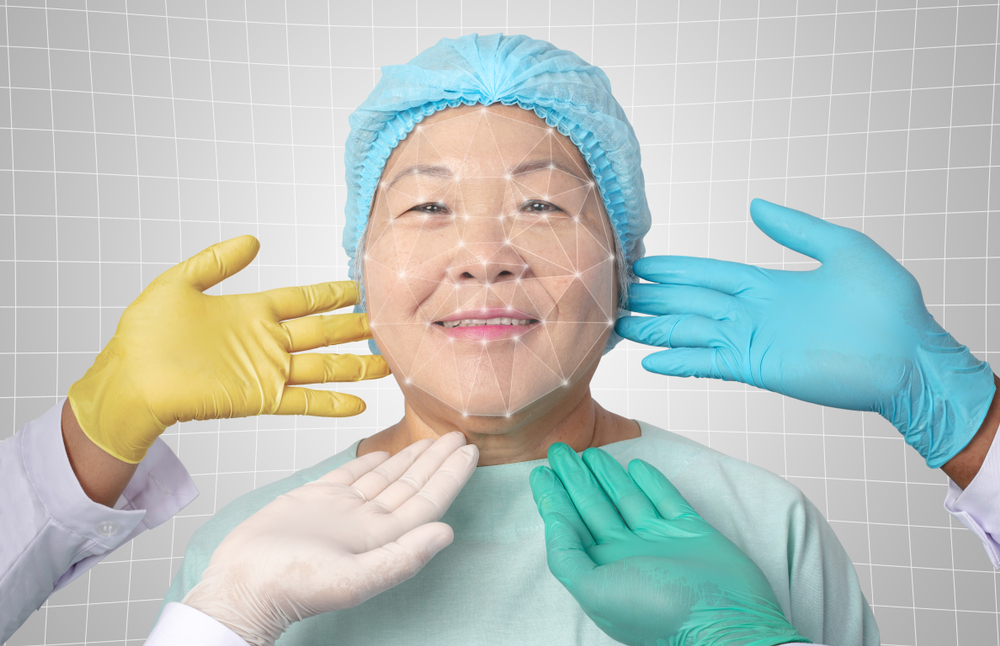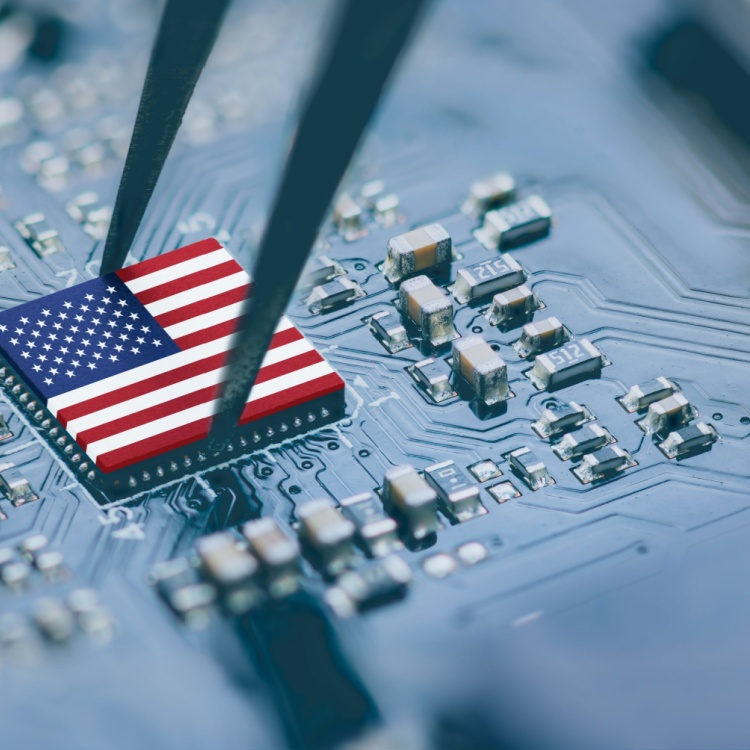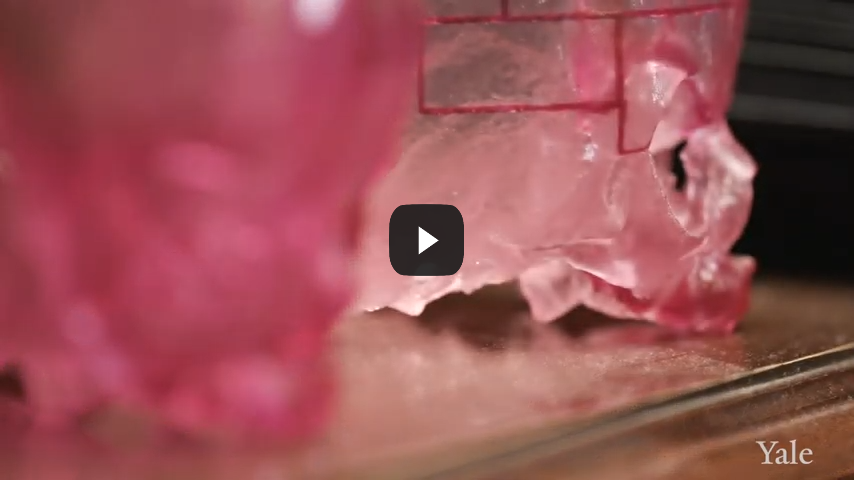Beyond Face Value: AI and Plastic Surgery

Discover how AI-powered innovations in reconstructive and cosmetic surgery are helping patients put their best face forward.
Artificial intelligence (AI) has left the pages of science fiction and is now essential in our everyday reality, from AI-powered virtual assistants to your smartphone’s face ID to the autocorrect function of your texting app.
Healthcare is no exception. In this article, discover how AI-powered innovations in reconstructive and cosmetic surgery are helping patients put their best face forward.
Brains and faces
Before we jump into the wonders of AI, here’s an amazing fact about the human brain: according to research, the average person can recognize a whopping 5,000 faces. It’s how you can spot an old friend in a stadium full of concert-goers, warmly greet an English teacher you haven’t seen in decades, or know immediately that it’s your favorite Hollywood star on the cover of a celebrity magazine near the grocery cashier.
How do our brains make that happen? There’s a region in the temporal lobe that responds specifically to faces: the fusiform face area or FFA. Back in 1997, neuroscientist Dr. Nancy Kanwisher and her colleagues published a groundbreaking study on face-specific brain processes. Using functional magnetic resonance imaging (fMRI), Dr. Kanwisher and her team identified the part of the brain that was highly active when research participants looked at faces—but not when they viewed various common objects.
How would a deep neural network measure up against the human brain’s capacity for facial recognition? Dr. Katharina Dobs, a cognitive computational neuroscientist, sought to find out.
Dr. Dobs gathered hundreds of thousands of images, including more than 1,700 human faces and various objects, such as kettles and guitars, to train the network to recognize objects and faces. “We never told the system that some of those are faces, and some of those are objects. So it’s basically just one big task,” Dr. Dobs shared. “It needs to recognize a face identity, as well as a bike or a pen.”
Without any prompting, the program assigned units specifically to facial recognition. “We didn’t build anything face-ish into our network,” said Dr. Kanwisher. “The networks managed to segregate themselves without being given a face-specific nudge.”
Whether in a human or artificial brain, facial recognition is so important that it gets its own valuable real estate. After all, a person’s face has both a functional and aesthetic role. It contains our eyes for seeing and our mouths for breathing, eating, and speaking. We use it for social interactions to show our emotions and identities.
For patients with injuries or anomalies, reconstructive surgery can give them a new lease on life. For others, cosmetic surgery can boost their self-esteem and propel them to give each day a hundred percent.
Let’s explore how AI is guiding innovations in plastic surgery.
AI-powered visual tools for a visual medical specialty
AI can help plastic surgeons before they enter the operating room, and while they’re in it. “If a patient needs to have their cheekbones done, the surgeon can take precise measurements using augmented reality, and bring them to the operating room,” Dr. David Alessi, founder and medical director of the Alessi Institute for Facial Plastic Surgery, shared.
“Another technological advancement is for patients who need to have significant plastic surgery reconstruction. Candidates for this are patients who have had serious accidents, which altered their face,” Dr. Alessi continued. “While in surgery digital tracking can be used simultaneously to ensure measurements are precise in complex reconstruction.”
(Also read: Holograms: From Sci-Fi to the Science of Health)
Improving burn care
Burn injuries are traumatic and devastating injuries that can be life-threatening. They can affect not only a patient’s physical health but psychological as well. An accurate assessment of the burn surface area and depth is critical to the successful treatment of a patient.
In 2019, computer science graduate student Jiao Chong of Wuhan University, together with his colleagues, used AI technology to diagnose burn wounds with improved accuracy.
Working with doctors from the Tongren Hospital at Wuhan University, the team collected and uploaded a thousand images of burn wounds with which to train the neural network. The research team then classified these images using an annotation tool that they developed with the doctors at Tongren Hospital. Testing their network with 150 burn images, the team achieved 84.51% accuracy.
“This deep learning framework shows excellent segmentation in burn wounds and [is] extremely robust in different burn wound depths,” the researchers concluded. “Moreover, this framework just needs a suitable burn wound image when analyzing the burn wound. It is more convenient and more suitable when [used] in clinics compared with the traditional methods.”
(Also read: AI in Medical Imaging: Revolutionizing Radiology)
Boosting 3D planning with machine learning
Plastic and reconstructive surgeon Dr. Derek Steinbacher specializes in cleft, craniofacial and maxillofacial surgery. He views his work the way an architect does. “Form and function follow one another,” Dr. Steinbacher shared with Yale Medicine. “If something is not well proportioned or is imbalanced, there most often is a functional component that goes along with that.”
For many of Dr. Steinbacher’s patients, that usually means their ability to chew, eat, speak, or breathe properly. For such complex facial reconstruction surgeries, careful planning is critical—and Dr. Steinbacher utilizes digital modeling. Utilizing the patient’s data, his team creates a 3D rendering that they can manipulate to improve surgical outcomes.
To improve the efficiency and effectiveness of his surgeries, Dr. Steinbacher is combining 3D planning with a machine learning model that is based on about 4,000 individuals from the United States and around the world.
“We don’t want to leave it to the hands of the computer to make every single decision, but we can use this model to get us three-quarters of the way,” Dr. Steinbacher shared in a video for Yale Medicine. “Incorporating this model into our planning process is going to help us get reproducible, high-fidelity, accurate, and very aesthetic results,” Dr. Steinbacher said.
As one of the Top 25 EMS companies in the world, IMI has over 40 years of experience in providing electronics manufacturing and technology solutions.
We are ready to support your business on a global scale.
Our proven technical expertise, worldwide reach, and vast experience in high-growth and emerging markets make us the ideal global manufacturing solutions partner.
Let's work together to build our future today.
Other Blog




